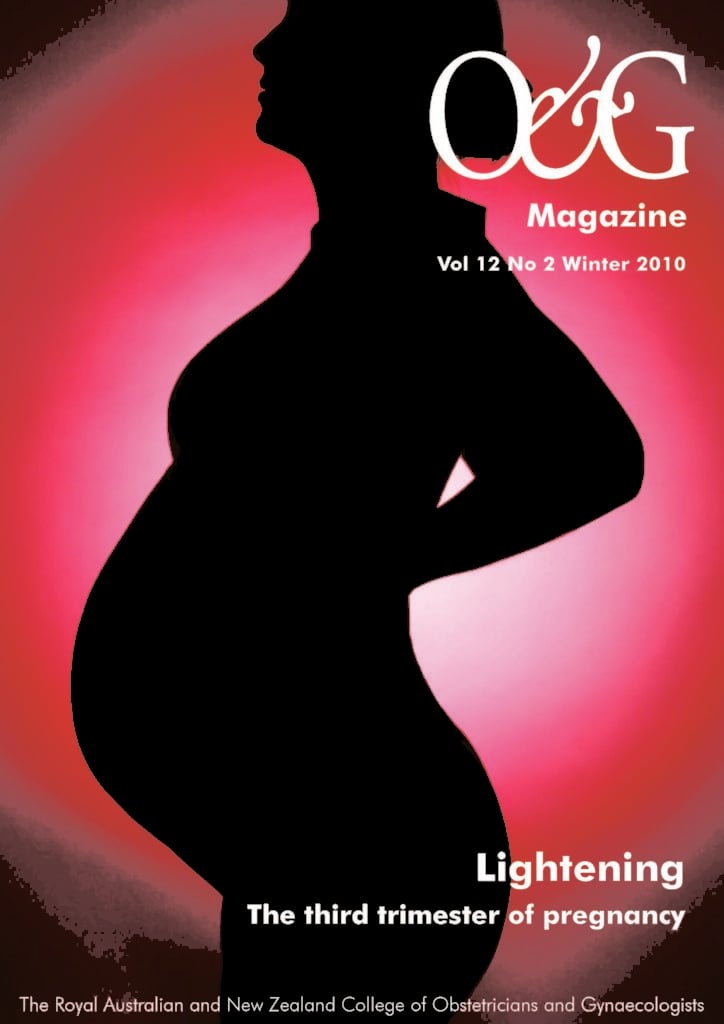Q&a attempts to provide balanced answers to those curly-yet-common questions in obstetrics and gynaecology for the broader O&G Magazine readership, including Diplomates, Trainees, medical students and other health professionals.
An 80-year-old woman with a utero-vaginal prolapse has her symptoms well
controlled with a ring pessary and regular topical estrogen cream. How often
should her pessary be changed? Can you re-use them by simply washing and
re-inserting at the same visit?
Ring pessaries can be a very effective form of management for women with utero-vaginal prolapse, who are unfit for or do not wish to undergo surgical treatment. Ring pessaries can also be used as an interim measure in younger women completing their families prior to definitive surgery.
How often should a woman’s pessary be changed or checked?
At the time of initial insertion, the woman should be assessed to ensure she cannot feel discomfort from the pessary, that it does not descend or displace on straining and that she can void adequately. A second check two to three weeks later is sensible to ensure there are no side effects such as discomfort, de novo stress or urge urinary incontinence, persistent prolapse symptoms or difficulty with defaecation.
Many women are able to be taught to remove, wash and replace ring pessaries. For those women who are unable to do so, they should be reviewed every four to six months, have the ring removed and the vagina checked for ulceration. Cube pessaries used for women with third or fourth degree prolapse apply suction to the vaginal walls and should be removed nightly. Vaginal ulcerations are reported in three to 24 per cent of long-term pessary users1,2,3 and there are case reports of ring incarceration and impaction with neglected pessaries4,5,6. Ulceration usually occurs on a background of vaginal atrophy and the use of vaginal estrogen two to three nights a week can be helpful. In the case of ulceration, this regime should be increased to nightly application, with one to two weekly checks to ensure healing is occurring. You may need to consider a temporary removal of the pessary during this time. As patients age, a change (usually reduction) in the size or type of pessary may be necessary. There should be enough space to sweep one finger between the pessary and vaginal walls but not so much that it rotates on straining. A pessary that is too large can increase the risk of ulceration.
Bacterial vaginosis occurs in up to 32 per cent of pessary users. An acidifying vaginal gel used twice weekly can be used to decrease this risk. Urinary tract infections are reported in up to 13 per cent of pessary users1,3,7,8 and women should be warned to look for signs of infection.
Reusing pessaries
The majority of pessaries are made from silicon which is nonporous and so does not absorb bacteria or odours. Washing with soap and water at clinic visits is sufficient but silicon pessaries are autoclavable and can also be sterilised with cidex or alcohol solutions, for example. Silicon pessaries naturally discolour but they only need to be replaced when there are signs of cracking, loss of shape or flexibility. A silicon pessary can last several years. The acrylic pessaries, such as the rigid gellhorn, can be washed and replaced, but should not be autoclaved or soaked in alcohol. They can be sterilised by soaking in cidex. Again, replacement is only necessary when there are visible signs of surface deterioration.
References
- Hanson LA, Schulz JA, Flood CG, et al. Vaginal pessaries in managing women with pelvic organ prolpase and urinary incontinence: patient characteristics and factors contributing to success. Int Urogecol J Pelvic Floor Dysfunct. 2006;17:55.
- Wu V, Farrell SA,Baskett TF, Flowerdew G. A simplified protocol for pessary management. Obstet Gynecol. 1997; 90:990.
- Powers K, lazarou G, Wang A, et al. Pessary use in advanced pelvic organ prolpase. Int Urogyn J Pelvic Floor Dysfunct. 2206; 17:160.
- Mohammed M, Sidra L, Haldipur H, Unuigbe A. Incarcerated appendices epiploicae through the posterior vaginal defect secondary to a ring pessary. J Obstet Gynaecol. 2008; 28(2): 252.
- Sankar A, Aziz A, Trottr P, Fox R. Outpatient management of incarcerated ring pessary: use of orthopaedic bone cutters. J Obstet Gynaecol. 2008; 28(2): 245.
- Frenando RJ, Sultan AH, Thakar R, Jeyanthan K. Management of neglected vaginal ring pessary. Int Urogyn J. 2007; 18 (1):117.
- Moore KH, Foote A, Burton G, King J. An open study of the bladder neck support prosthesis in genuine stress incontinence. Br J Obstet Gynaecol. 1999;106: 42.
- Alnaif B, Drutz HP. Bacterial vaginosis increases in pessary users. Int Urogynecol J Pelvic Floor Dysfunct. 2000;11: 219.






Leave a Reply